Royal Worcester was established in 1751 and is thought to be one of the oldest English porcelain brands still in existence today. Royal Worcester has for centuries been synonymous with quality, and its hand painted plates, vases and dinnerwares are always prized in our auctions.
Potteries Auctions can identify and provide valuations on a wide range of Royal Worcester pieces.
Popular Royal Worcester Items at Auction
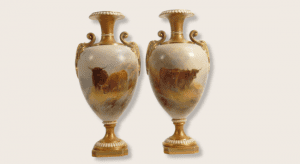
Pair of Royal Worcester two handled vases, hand painted with Highland cattle by H Stinton
£2,800
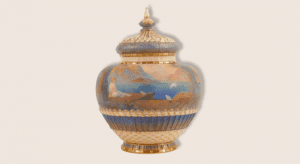
Royal Worcester Potpourri vase & covers, decorated with a seated lady, seagulls and coastal scene by Walter Sedgley
£3,100
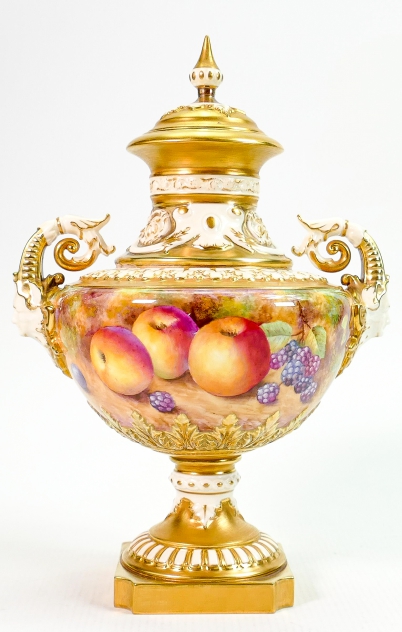
Royal Worcester two handled gilded vase & cover hand painted all around with fruit by P. Stanley
£3,000
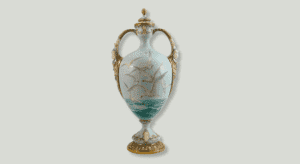
Royal Worcester two-handled vase & cover, Charles Baldwin
£8,600
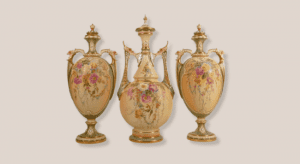
Royal Worcester 3 piece garniture of vases & cover
£2,200
Got an interesting item?
Speak to one of our experts to find out the value of your pottery, antiques, jewellery, & collectables
Book a valuationWhether you are looking to buy or sell Royal Worcester collectables, the team of experts at Potteries Auctions can help you find the piece you are looking for, or value your items for sale. Request a call back if you are looking for a valuation and are seeking to sell some Royal Worcester collector pieces at auction.
Royal Worcester Pottery Facts
- Royal Worcester – the Worcester Royal Porcelain Co. Ltd – was established in 1862, but the history of the pottery goes back to 1751.
- Early works by the pottery were soft-paste porcelain pieces, known in ceramic circles as soapstone.
- The Royal warrant was granted by George III in 1788. Royal warrants were also issued by the Prince of Wales in 1807, and the Princess of Wales in 1808.
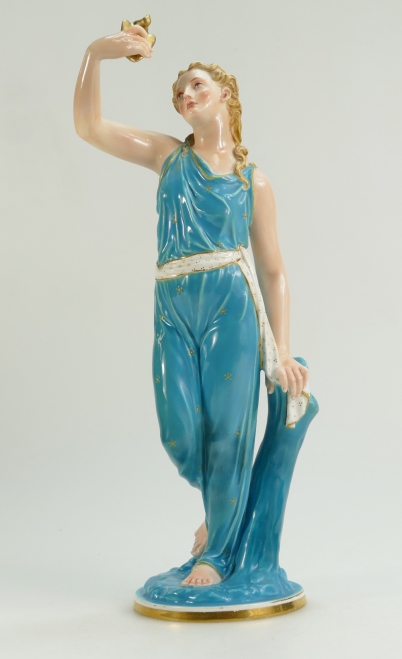
The History of Royal Worcester Pottery
The Royal Worcester story started when Dr John Wall, a physician, and William Davis, an apothecary, developed a unique method for producing porcelain and, in 1751, persuaded a group of 13 businessmen to invest in a new factory at Warmstry House, Worcester. Dr John Wall retired in 1774, however his partners continued to manufacture until their London agent, Thomas Flight, took over.
In 1788 George III, following a visit to the company, granted it a royal warrant, and it became known as the “Royal Porcelain Works”.
The following years, the factory fell into disrepair. Production was limited to low-end patterns of mostly Blue and White porcelains, after Chinese porcelain designs of the period. It was also pressured by competition from inexpensive Chinese export porcelains, and from Thomas Turner’s Caughley Factory.
Martin Barr joined the firm as a partner in 1792; porcelains of this period are often identified by an incised capital “B” and, later, by more elaborate printed and impressed marks.
When John Flight died, the company changed to Flight & Barr (1792-1804) – then Barr, Flight & Barr (1804-1813) and Flight, Barr & Barr (1813-1840). Then, to Chamberlain & Co (1840-1850) when Flight, Barr and their arch rival Chamberlain joined forces.
In 1852, Irishmen Richard William Binns and William Henry Kerr took over the management of the Chamberlain & Co. porcelain works in Severn Street, Worcester. The factory had been ravaged by fire and an extensive building programme took place in the 1850’s. Modern machinery was purchased and installed and new working methods improved the quality of the product.
In 1862, Kerr left and, under the leadership of Richard Binns, with new bodies, improved glazes and properly trained staff, the Worcester factory quality increased substantially.
By the 1920’s there was a downturn in the world economy, and Royal Worcester narrowly escaped closure. It was rescued by Charles Dyson Perrins, who bought the company outright in the early 1930’s. All forms of earthenware and glazed Parian were discontinued in 1931 and, in the same year under the Royal Worcester name, they launched a new range of bone china figures.

In 1933, an American publisher encouraged Royal Worcester to make limited edition bird models for the American market. Post World War II, Royal Worcester produced a number small decorative figures by artists such as Eva Soper, Agnes Pinder Dabis and Doris Lindner. The popularity of these designs led to many more series’ in the 1960s and beyond. Royal Worcester’s most popular pattern has been “Evesham Gold”, first offered in 1961, depicting the autumnal fruits of the Vale of Evesham with fine gold banding on an “oven to table” body. This was created by Robert Baker, Professor of Ceramics at the Royal college of Art, and two of his pupils in 1961.
In 1976, Royal Worcester made an offer for Spode which cumulated in them taking a 55% share, with Carborundum holding the remaining 45%. When Carborundum was itself taken over by Kennecott in 1978, Royal Worcester acquired the balance of the shares, taking full control of the company. In 1983, the Crystalate Manufacturing Company Ltd, better known for making gramophone records, achieved a hostile take-over of Royal Worcester Spode, and the following year sold the business on to the London Rubber Company, who subsequently made an unsuccessful hostile takeover bid for Wedgwood.
After the merger with Spode, and due to heavy competition from overseas, the production was switched to factories in Stoke and abroad. 100 staff were made redundant in 2003, and another 100 went in 2005. 15 porcelain painters left the Severn Street factory in 2006, together with 100 other workers. The last trading date for Royal Worcester was 14 June 2009.
The company went into administration on 6 November 2008, and on 23 April 2009 the brand name and intellectual property were acquired by Portmeirion Pottery Group. As Portmeirion Group has a factory in Stoke-on-Trent, the purchase did not include Royal Worcester and Spode manufacturing facility.
Get In Touch
Potteries Auctions can collect items for auction from anywhere in the UK, and we can also handle large collections from all over the world, so just get in touch with us to discuss. We pride ourselves in our packing and shipping service to get goods out to purchasers, making it a perfect solution for buyers who can’t attend auctions in person.
Sign up for our newsletter
If you would like to receive advance notification of upcoming auctions and sale notifications, then please subscribe to either our text alerts or email newsletter via the buttons below.
